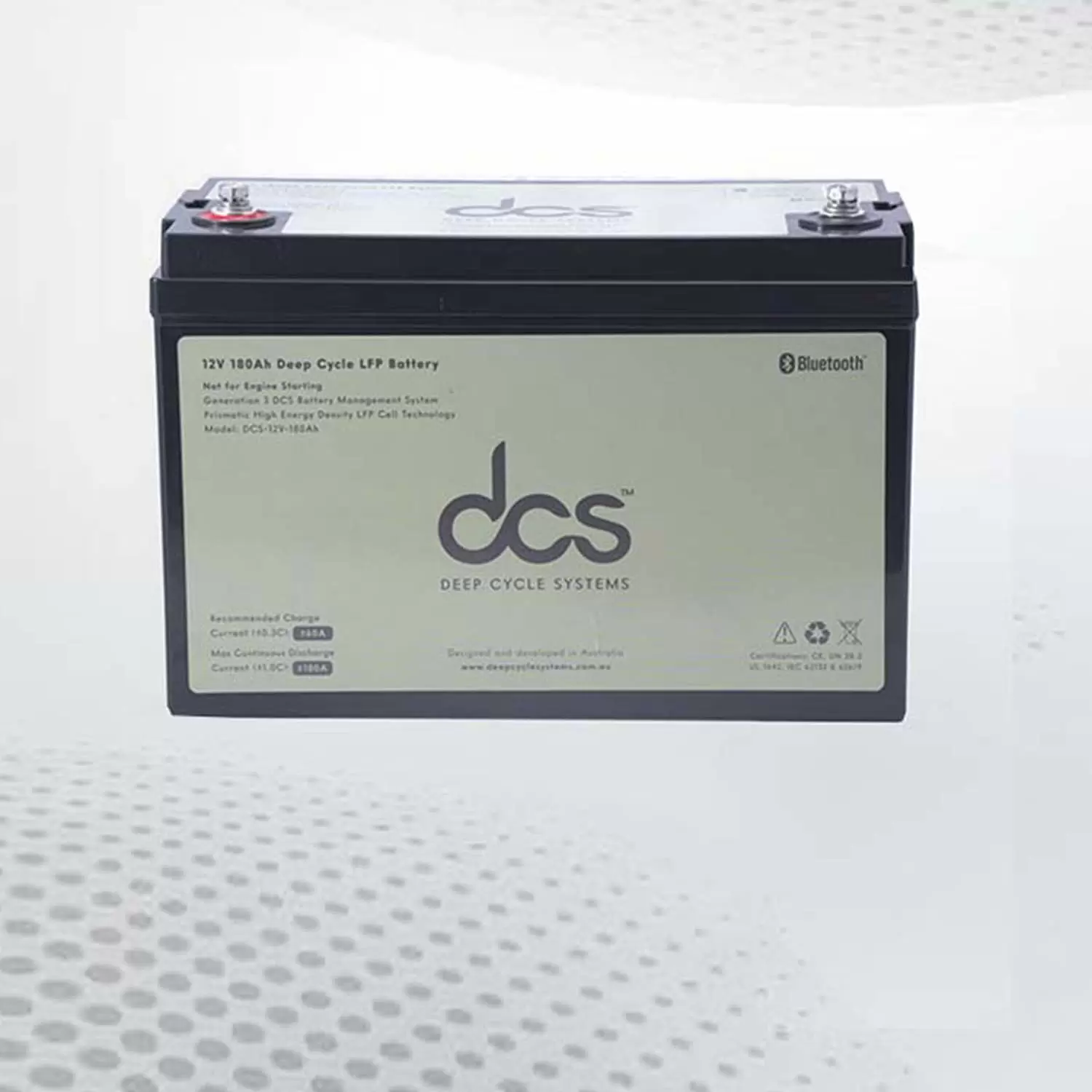180Ah Battery Guide: Expert Tips on Choosing & Maintenance

Regarding power solutions, a 180Ah battery stands out as a formidable choice for those seeking reliability and performance. Whether you’re powering appliances in an RV, running tools on a job site, or setting up renewable energy systems at home, understanding your options is key. But with various types of batteries available—lithium and lead-acid—it can be overwhelming to decide which suits your needs best. This guide will walk you through everything you need to know about choosing the perfect 180-ah Battery and how to keep it running smoothly over time. Get ready to tap into a world of dependable energy storage!
Lithium vs. Lead-Acid: Best 180-ah Battery for Performance
When choosing a 180-ah Battery, the battle between lithium and lead acid often takes centre stage. Lithium batteries are known for their lightweight design and superior energy density. This means they can store more power in a smaller space, making them ideal for applications where weight is crucial.
On the other hand, lead-acid batteries come with a proven track record of reliability and affordability. They perform well under heavy loads but tend to be bulkier and heavier than their lithium counterparts. Their initial cost is lower, but potential long-term expenses should also be considered due to shorter lifespans.
Your choice will depend on specific needs such as weight limits, budget constraints, and usage frequency. Knowing these factors helps you make an informed decision tailored to your situation.
How to Calculate Power Requirements for a 180ah
Calculating power requirements for a 180ah starts with understanding your devices' energy consumption. Identify the wattage of each device you'll be using. This information is typically found on the product label or user manual.
Next, determine how many hours you plan to run these devices daily. Multiply the wattage by the number of hours to get the total watt-hours needed daily. For example, if a device uses 50 watts and runs for four hours, it consumes 200 watt-hours.
Once you have your daily watt-hour requirement, divide that figure by your battery’s voltage (usually 12V). This will give you an estimate of how many amp-hours are necessary from your 180-ah Battery system. Following this method will ensure efficient usage without risking deep discharges or overloading your battery.
Best Applications for a 180-Ah Deep Cycle Battery
A 180-Ah deep cycle battery is a versatile power source for various applications. It excels in renewable energy systems, especially solar setups. Because it can store substantial energy, it can keep your home running smoothly during outages.
Another popular application is in recreational vehicles (RVs). A 180-ah Battery provides enough power for lights, appliances, and entertainment on the road or camping. Its durability makes it perfect for outdoor adventures where reliable electricity is essential.
Marine use also thrives with this battery size. Whether powering trolling motors or onboard electronics, a 180-Ah deep cycle battery provides consistent performance and longevity on the water. It's an excellent choice for boaters looking to enhance their experience without frequent recharges.
Proper Charging Techniques to Extend 180 Ah Lifespan
Proper charging techniques are crucial for extending the lifespan of your 180 Ah. Always use a charger specifically designed for deep-cycle batteries. This ensures compatibility and helps maintain optimal performance.
Monitor the voltage during charging. Aim for a consistent range that suits your battery type—typically between 14.2 and 14.6 volts for lead-acid and around 14 to 14.4 volts for lithium models. Avoid overcharging, as it can damage the cells over time.
Additionally, consider using smart chargers with built-in protection features such as automatic shut-off or temperature compensation adjustments when fully charged. These chargers adapt their performance based on environmental changes, providing safer and more efficient energy replenishment for your battery system.
How to Safely Install a 180-ah Battery in Your System
Installing a 180-ah Battery safely ensures optimal performance, longevity, and protection for your system. Whether using it for solar, RV, marine, or backup power applications, following proper installation steps minimizes risks and maximizes efficiency.
Choose a Suitable Location
Place the battery in a well-ventilated, dry, and stable area. Avoid extreme temperatures and ensure it's away from flammable materials or direct sunlight.
Use the Correct Wiring and Connectors
Select appropriately sized cables and connectors to handle the battery’s power capacity. Using undersized wires can lead to overheating and energy loss.
Ensure Proper Polarity Connection
Connect the positive (+) terminal to the system’s positive and the negative (-) terminal to the negative. Reversing polarity can damage the battery and connected devices.
Secure the Battery in Place
Use a sturdy battery tray or mounting bracket to prevent movement, especially in mobile applications like RVs and boats. This reduces vibration-related damage.
Check Voltage and Charge Before Use
Before installation, ensure the battery is adequately charged and within the recommended voltage range. A partially charged or deeply discharged battery may require initial conditioning.
Install a Battery Management System (BMS) for Protection
A BMS prevents overcharging, over-discharging, and short circuits for lithium batteries, improving safety and longevity.
Maintaining Optimal Voltage Levels for a 180 Ah Battery
Maintaining optimal voltage levels in a 180 Ah battery is crucial for longevity and performance. Regularly monitoring the voltage will help you identify any irregularities early on. A fully charged 180-Ah battery should generally maintain a 12.6 to 13.2 volts voltage.
A multimeter can simplify this process, allowing you to regularly check your battery's state. If the readings drop below these thresholds, it may indicate an issue that needs immediate attention. Keeping your connections clean and secure also helps ensure accurate readings.
Proper usage patterns also play a significant role; avoid draining the battery excessively or allowing it to sit idle for long periods without charge. Regular checks will make all the difference in maximizing your battery’s efficiency over time and preventing potential damage.
Preventing Overcharging and Deep Discharges in 180-Ah Batteries
Preventing overcharging and deep discharges is crucial for maintaining the health of your 180-ah Battery. Overcharging can lead to overheating, damaging internal components and reducing lifespan. Use a reliable charge controller that automatically adjusts charging levels based on the battery’s state.
Deep discharges occur when the battery voltage drops too low, which can also result in permanent damage. To avoid this, monitor voltage regularly using a voltmeter or digital display. Setting up an alarm system will alert you before it falls below safe levels.
Incorporating regular maintenance checks into your routine helps catch potential issues early. Keeping terminals clean ensures good connectivity and prevents corrosion from hindering performance. By following these practices, you'll enhance reliability and longevity while maximizing efficiency in your power needs.
Best Chargers for Efficient 180 Amp Battery Charging
Choosing the correct charger for your 180 Amp Battery is crucial for optimal performance. Look for smart chargers that automatically adjust charging rates based on battery status. These chargers help prevent overheating and ensure efficient energy use.
Another key feature to consider is multi-stage charging technology. This allows the charger to go through different phases—bulk, absorption, and float—to recharge while maintaining battery health fully. A well-rounded charger can significantly extend your battery's lifespan.
Pay attention to compatibility with your type of 180-ah Battery, whether lithium or lead-acid. Some chargers are designed specifically for one type over another. Investing in a quality charger tailored to your needs makes all the difference in maintaining power efficiency and prolonging usage.
How Temperature Affects the Performance of a 180-ah Battery
Temperature plays a crucial role in the performance of a 180-ah Battery. When exposed to extreme heat, the chemical reactions within lithium and lead-acid batteries can accelerate. This may increase efficiency but also shortenlifespan due to thermal stress.
Conversely, cold temperatures can significantly reduce capacity. A 180-ah Battery may not deliver its full potential when subjected to frigid conditions. Users often notice diminished runtime as internal resistance increases, making it harder for the battery to perform optimally.
Maintaining an ideal temperature range is vital. Ideally, lithium batteries thrive between 20°C and 25°C (68°F - 77°F). For lead-acid options, slightly higher temperatures are tolerable but still require monitoring to avoid overheating or freezing issues that could compromise overall functionality.
Conclusion
Choosing the correct 180Ah battery is essential for getting the most out of your power needs. Whether you opt for lithium or lead acid, understanding their differences can significantly impact performance and longevity. Proper maintenance is crucial in extending lifespan, so adopting good practices will ensure reliability. Regular checks on voltage levels and charging habits are vital to keep your battery functioning optimally. By prioritizing these factors, you'll enhance efficiency and enjoy peace of mind knowing you're equipped with a dependable power source.
FAQs
What is the difference between lithium and lead-acid batteries?
Lithium batteries offer higher energy density, faster charging times, and longer lifespans than lead-acid options. However, they come with a higher upfront cost. Lead-acid batteries are more affordable but heavier and require regular maintenance.
How often should I charge my 180Ah battery?
Charging frequency depends on your usage. If you regularly deplete the battery's capacity, aim for daily charging or every few days. For less frequent use, monitor voltage levels to determine when it’s time to recharge.
Can extreme temperatures affect my battery's performance?
Yes! Both high and low temperatures can significantly impact efficiency and lifespan. For optimal performance, it’s best to store your 180-ah Battery in a climate-controlled environment whenever possible.
|
Related Business Listings |






